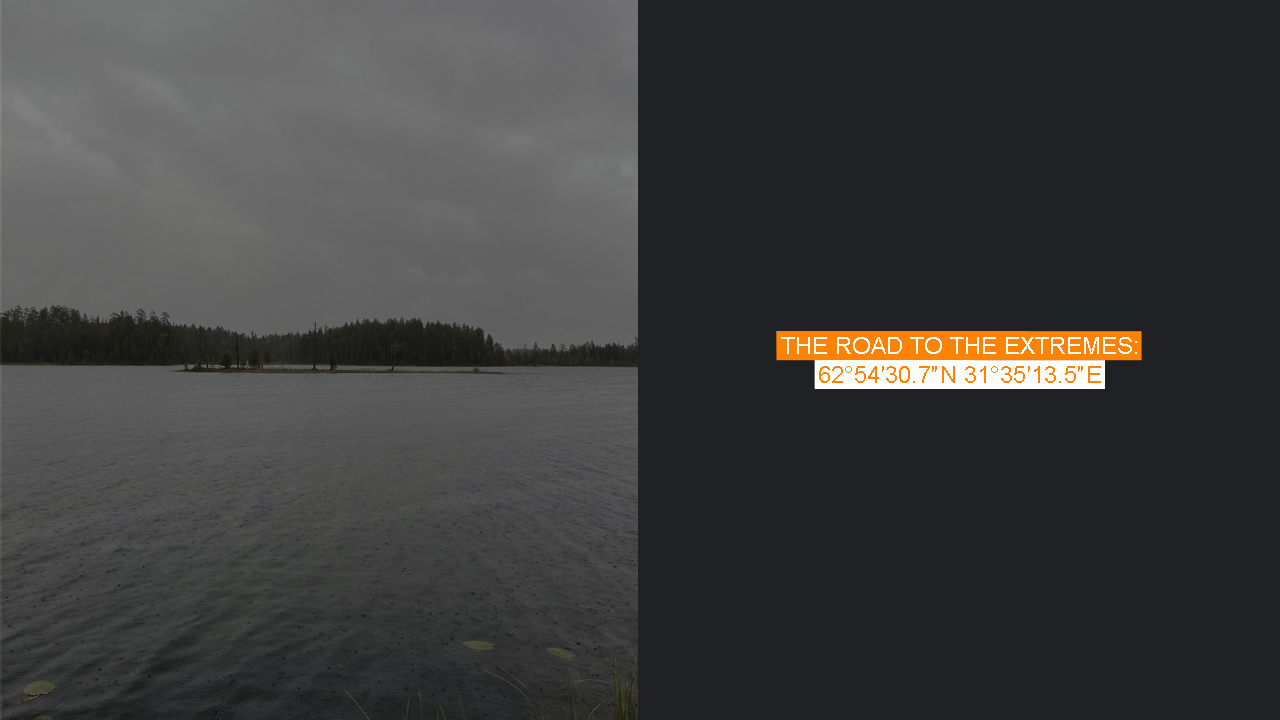Deep in the forests of eastern Finland, where the landscape feels untouched by time, lies the easternmost point of both Finland and the European Union. This unique spot, on an island in the tranquil waters of Lake Virmajärvi, sits within the village of Hattuvaara in the municipality of Ilomantsi. It’s so far east that it surpasses both St. Petersburg and Kyiv. Yet, despite its remarkable geographical significance, it is a place that feels like a distant world, far from the bustling capital, Helsinki, which is a solid 550 kilometers away—a six-and-a-half-hour drive.
On one crisp autumn Saturday, with the air tinged by the unmistakable scent of wet leaves, a spontaneous idea struck me: Why not visit this remote border point, an area that had once required special permission from the Finnish Border Guard until 1996? It was the kind of decision made in the moment, born of curiosity and adventure. And once it was made, there was no turning back. The unpredictable Finnish weather that weekend alternated between bursts of sunshine and heavy, persistent rain, as if the landscape itself couldn’t decide which mood to wear.
With little planning, even accommodation had to be booked on the fly. A few calls later, we found ourselves heading toward Bomba Spa in Nurmes, a cozy resort not far from our destination—but still further north, nestled against the dense forest of the region.
The next morning, after a leisurely breakfast where the warmth of the food contrasted with the chilly air, we set off for Virmajärvi. What I hadn’t fully grasped was just how far we had yet to go. From the spa, the drive would stretch over two and a half hours, a journey through the untamed Finnish wilderness.
The navigator offered us two routes: one was slightly shorter in distance and time—just 165 kilometers, with an estimated driving time of 2 hours and 20 minutes—and the other, longer by 45 minutes but 45 kilometers farther. We chose the seemingly easier option. That choice, as it turned out, would lead us deep into the forest, where the road disappeared into a crumbling dirt track.
The road quickly turned rough—potholes and loose gravel tossed us from side to side, as if the car were navigating the very spine of the wilderness itself. The dense trees closed in around us, their towering trunks stretching toward the sky, blocking out the weak sunlight. The isolation was palpable. We were far from civilization, surrounded only by the hum of the engine.
Eventually, after what seemed like an eternity of jostling, we found our way back to solid asphalt. But the relief was short-lived; ahead, the path toward the easternmost point beckoned, marked by a single sign directing us toward the remote landmark. The final 20 kilometers were easy to follow, thanks to the clear signs marking each turn, but the atmosphere felt increasingly surreal.
As we neared the border, the yellow pillars of the border zone began to appear, standing tall and stark against the autumn colors of the forest. The air felt heavier now, tinged with the history of the land. Soon we reached a small parking area at the end of the road—just as the heavens opened up, and the rain began to fall in thick sheets. I had never been so thoroughly soaked in my life. But despite the relentless downpour, there was a magnetic pull toward the place. The easternmost point of Finland, a hidden corner of the world, was within reach.
The final stretch of the journey was a narrow passageway through the trees, marked by yellow pillars and a rope guiding us along the designated path. It was forbidden to stray from this route—a stark reminder of the land’s political significance. With each step, I felt the gravity of standing so close to the border, where two countries met, separated only by a thin strip of water and history.
At last, we reached the edge of the lake. There, standing as silent sentinels, were the border markers: a white-blue pillar symbolizing Finland’s side, a red-green pillar for Russia, and a smaller white pillar positioned perfectly between them—marking the precise point where two historic borders converged. The lake itself was forbidden to enter, but I couldn’t tear my eyes away from the hauntingly calm waters, reflecting the overcast sky. The spot was quiet, almost sacred, as though the land had long since accepted its dual identity.
This was the meeting point of two treaties: the Treaty of Stolbovo from 1617, which extended the border northwest, and the Moscow Peace Treaty of 1940, which reshaped the boundary in the south. Standing there, I could almost feel the weight of centuries of history—the shifting of borders, the quiet resilience of this remote place, tucked away from the world.
Though the weather was no invitation to swim in the frigid waters, we were free to take photographs. No drones, of course, but the sheer isolation of the spot made the need for technology feel far less important. My clothes, soaked through by the rain, clung to me, but the dampness hardly mattered. This was a moment to savor: a quiet, fleeting connection with a place that few ever visit.
After a few quick photos—my fingers numb but my spirit warm with the thrill of adventure—we began our journey back. The sky darkened quickly, as it tends to do in the autumn months, and the potential dangers of the forest roads loomed in my mind. The drive back was long and tedious, with the usual gas stops and a much-needed dinner along the way. By the time we arrived back in Helsinki, it was well past midnight, and the world felt far removed from the quiet expanse of Virmajärvi.
I fell into bed that night, exhausted but content, knowing that I had experienced something few ever would. The next morning, it was time to head back to the usual grind of work, but I carried with me a deep sense of fulfillment—an understanding of a place where history, geography, and nature converge in such an extraordinary way.

